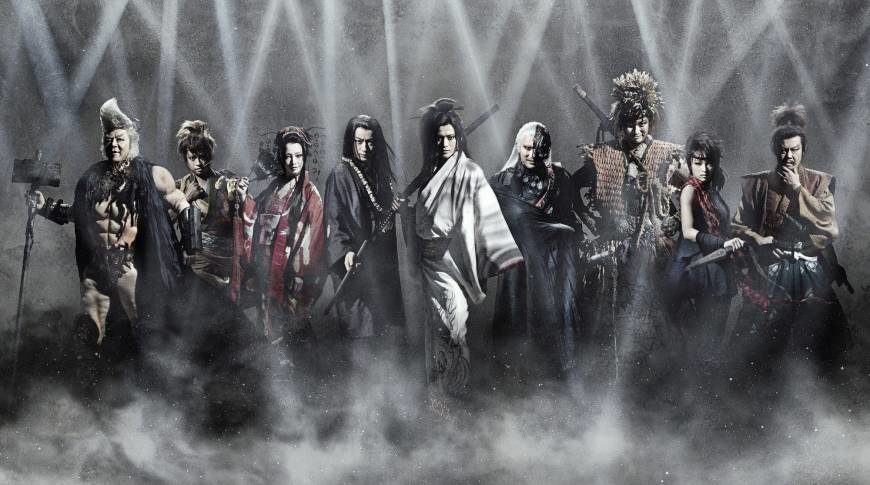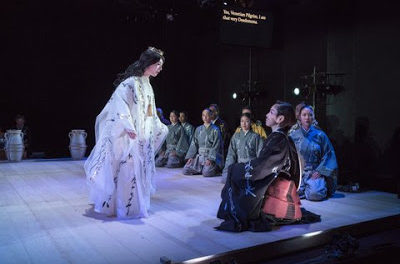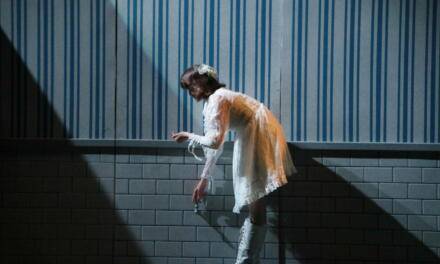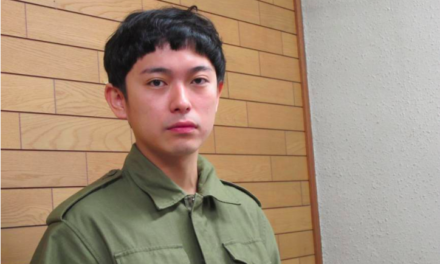Japanese audiences will soon join those in Holland as the only people in the world with access to a theater whose seating area rotates to face a ring of multiple stages.
So when Kazuki Nakashima’s acclaimed samurai drama Dokurojo no Shichinin (Seven Souls in the Skull Castle) opens on March 30 at the brand-new, 1,300-capacity IHI Stage Around Tokyo theater in Koto Ward’s Toyosu district, its director, Hidenori Inoue, told The Japan Times with obvious delight, “I’m sure people will feel the sort of excitement they do at an amusement park.”
Keiji Matsumura, the theater’s manager who also works in the cultural enterprise department of its main backer, TBS Television (Tokyo Broadcasting System Television, Inc.), adds with a smile, “Surprisingly when I went to the 360-degree Theater Hangaar in Holland, I felt a slightly floating feeling in my seat. It was a special experience I’ve never had anywhere else.”
As to why TBS plunged into this enormous project against the backdrop of a stagnant national economy, Matsumura explained, “This all started when two of my bosses at TBS heard about the Dutch theater and went to see it some years ago.
“They were so thrilled about its unique concept of rotating the audience seating on a huge tray that they took a few possible financial backers to see it as well.”
But TBS was not alone in its interest. Since it opened in a hangar of a disused airport in October 2010, Theater Hangaar has been a hot topic in the theater world, and London, New York, Shanghai and the northwestern English city of Liverpool are now in line to follow its lead.
Yet what makes the Dutch theater even more remarkable is that it has been staging the same original musical, Soldier of Orange, ever since it opened. Based on the true story of a Dutch resistance hero in World War II, the show has played to full houses for more than six years, with a total audience of more than 2 million to date.
“The theater is an hour’s drive outside Amsterdam, and there are no English subtitles or anything,” Matsumura said, “but it has captured the imagination of everyday Dutch people.
“So we finally decided to build the IHI Stage Around Tokyo on reclaimed land in Tokyo Bay, as there was no affordable site in central Tokyo.
“Also, seeing the situation in Holland, we are positive about our decision despite not having foreseen the problems that have postponed the opening of Tokyo’s new fish market in Toyosu, with all the restaurants and other activities that it will pull in.”
Although Matsumura cautioned that the theater — named after one of its backers, IHI Corp. (a leading engineering and shipbuilding conglomerate headquartered in Toyosu) — must rely on popular, long-running productions to cover the huge costs involved, he radiated enthusiasm, saying, “We are really looking forward to this stunning project inspiring a new cultural trend ahead of the 2020 Tokyo Olympics.”
With its revolving seating area, the venue will certainly present audiences with something entirely new in Japan: Four distinct stages that can host a variety of scenes in sequence without any blackout or interruption.
The costs to which Matsumura alluded, however, are serious. Expenses for elements such as sets, lighting and sound systems will be at least four times those of a conventional single-stage show.
Consequently, TBS selected Gekidan Shinkansen, the company Inoue founded as a student in 1980, and which is renowned for its successful, long-running productions, to stage Dokurojo no Shichinin over an unprecedented 15-month run as the venue’s opener.
The same company premiered the production in Tokyo and Osaka in 1990. Since then, they’ve staged different versions around the country about every seven years.
Right from the start, the play, which is set in the late 16th century in eastern Japan, grips audiences as a fictional tyrant named TenmaOh (played here by Songha) rules over his people from Dokurojo (Skull Castle) following the assassination of his former lord, the wise, real-life warrior Oda Nobunaga.
Then, after Sutenosuke (Shun Oguri), who once served Oda along with TenmaOh, rescues a woman being attacked by the tyrant’s men, he is joined by Mukaiya Ranbe (Koji Yamamoto), an expert swordsman and another of Oda’s former retainers. Together with a few friends they vow to overthrow TenmaOh.
Not everything is as clear-cut as it may seem, however. In fact, amid all the thrilling sword fights, audiences soon begin to wonder what’s really driving these warriors, and who will be the last samurai left standing — especially after the famed general Toyotomi Hideyoshi sets out for Skull Castle with his army.
“Using this new theater’s outstanding panoramic potential, I’m aiming to create a fantastic spectacle,” Inoue says. “Also, using the rotating seating system and the 360-degree elevated walkway between that area and the stages, we can have lots of amazingly thrilling chanbara (sword-fighting) really close to the audiences.”
But the director said orchestrating such feats are not the major challenge.
“If I want to ask an actor to run faster, for example, that’s no problem in itself,” he said. “But now because computers control so much, if I speed up one section or make almost any other change, then someone has to input all the data (for the moving seating) again from the beginning.”
Free of such worries, the in-demand 35-year-old Songha, who plays the evil TenmaOh and is working with Inoue and his team for the first time, excitedly reported, “We spend most rehearsals doing chanbara and action scenes.
“It’s great, because I’ve learned from my instructor that using a sword in a play is like saying your lines, as both depend on actors’ precise interactions. Each movement has meaning, so without using words we have to express a narrative in the fighting scenes.”
As for his character TenmaOh, Songha said, “I suppose many people who’ve seen this before may regard him as a dignified villain, but I’m still developing his role day by day and I’m thinking about making him more wily and cold-blooded.
“However, I believe villains have to be mysterious, taciturn people. While the hero Sutenosuke needs to be open-minded and charming, TenmaOh must hide his inner turmoil and his dark past. That uncertainty is important so each audience member can imagine him for themselves.”
Then, echoing Inoue’s delight, Songha added, “This IHI Stage Around Tokyo has huge potential because, with so much non-visible area in its vast space, audiences can feel as if 200,000 warriors are surrounding them. In theater, that kind of thing can happen in your brain.”
As much as Songha’s devious TenmaOh sounds like a great role in prospect, he won’t be the Skull Castle’s only ruler. In fact, over the 15-month run, Gekidan Shinkansen will present four different versions of “Dokurojo no Shichinin” — each with different casts.
As to why he’s embarking on such a unique series of productions, the director, Inoue, said, “First of all, there’s no culture of long runs in Japan, perhaps apart from the Shiki Theatre Company, which mainly uses its own theaters to present Western musicals with Japanese casts. Even kabuki and Takarazuka (Revue) change their programs every month.
“Then I think many theatregoers here just want to see their favourite actors and follow their careers, rather than buying tickets for particular programs. There’s also a fundamental fickleness in the Japanese nature, and a tendency to get bored easily, so they prefer something that’s novel or new.”
With the help of the top-notch casts Inoue has lined up for the rest of the run, and his hints about the second version starting on June 27 being a “showy and glistening visual stage,” it seems those fickle Japanese theatregoers have a lot to look forward to.
And with the theater pledging to hold back some tickets to sell on the day of each performance, it hopes everyone who wants to can savor the city’s latest cultural landmark.
“On top of all that,” Matsumura said, “We are exploring new possibilities every day, and soon we will offer subtitle-screening headgear in English. Then a lot more foreign customers, too, will be able to enjoy the finest samurai drama in the world’s best theater for staging it.”
The first version of Dokurojo no Shichinin (Seven Souls in the Skull Castle) runs March 30-June 12 at IHI Stage Around Tokyo outside Shijo-mae Station on the Yurikamome Line, or a 15-minute walk from Toyosu Station on the Yurakucho Line. For details, call 0570-084-617 or visit www.tbs.co.jp/stagearound.
This article was originally posted on The Japan Times. Reposted with the permission of the author. Read the original article here.
This post was written by the author in their personal capacity.The opinions expressed in this article are the author’s own and do not reflect the view of The Theatre Times, their staff or collaborators.
This post was written by Nobuko Tanaka.
The views expressed here belong to the author and do not necessarily reflect our views and opinions.


















